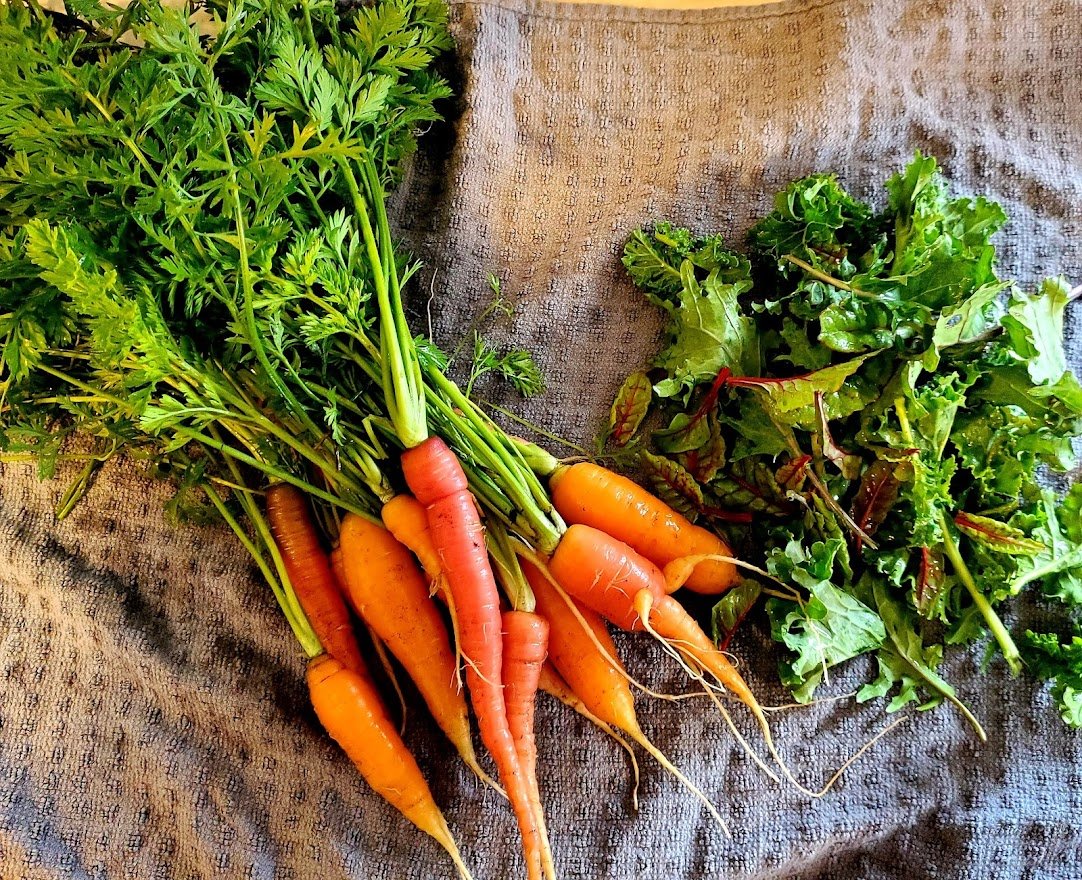What we Grow
not just a lavender farm
A field of vegetables and herbs, summer 2021
Things We Grow
Green beans, yellow beans, purple beans, Russian sage, lavender, jalapenos, chamomile sunflowers, violets, rhubarb, echinacea, chicory, oregano, parsley, savory, garlic, sage, chocolate mint, peppermint, marigold, purple cabbage, basil, summer squash, blue verbena, rose bergamot, lettuce, spinach, tomatoes, red radishes, broccoli, brussel sprouts, peas, corn, onions, potatoes, cucumbers, chives, Russian kale, blue kale, beets, Swiss chard, nasturtium, and corn!!!
When (and Why) to Harvest Your Lavender for Best Results
If you're growing lavender at home — whether it's one plant in a pot or a dozen along the walkway — knowing when to cut the flowers makes all the difference in how long your blooms last and how many you get.
The best time to harvest is when the flowers are about one-quarter to one-third open. That’s the sweet spot. The buds are still full of oil, the color is vibrant, and you’re catching them before they start to fade. This timing gives you the most fragrance and longest-lasting dried flowers for crafts, bundles, and sachets.
And here’s the kicker: when you cut your lavender early and properly, you’re not just harvesting flowers — you’re telling the plant to bloom again. It says, “Oh, you took my flowers? I’ll make more.” And depending on your climate and variety, that means you could get a second bloom later in the season, or even a third in especially warm, sunny places.
How to Harvest Lavender for Drying
Don’t wait too long. If the blooms are fully open or starting to fall off, they’re past their prime for drying and won't hold up as well.
Use clean, sharp clippers and cut just above the woody part of the stem — but never into the wood itself. Lavender doesn’t like being cut into the old wood, and it won’t grow back from there. Always snip where the green meets the gray.
Bundle your cut stems in small bunches using twine or rubber bands (they’ll shrink as they dry).
Hang upside down in a cool, dry, dark place with good airflow — a closet, shed, or unused room works great. This helps retain color and prevent mold.
Check back in 1–2 weeks — once they’re dry and crisp to the touch, they’re ready for use in everything from wreaths to teas to drawer sachets.
Encouraging a Second Bloom
After your first harvest, the plant might look a little bare — but don’t worry. It’s just regrouping. If you cut it back correctly some lavender varieties will push out a second flush of flowers. It won’t be as dramatic as the first bloom, but it’s still beautiful — and a great reward for good timing.
Some cold-hardy varieties like Munstead and Hidcote are especially good at this. before fall if you keep up with your harvests and avoid overwatering.
Things We Forage
Apples, pussy willows, raspberries, blackberries, grapes, ramps, fiddleheads, pansies, rhubarb, clover, moss, crabapples, great mullein, and mushrooms!!











